It can be interesting to see your plants change color over time, but you may have started wondering why your catnip is turning purple. We researched this for you, and here is what we've found.
Catnip may be turning purple due to the following negative and positive reasons:
- Unsuitable soil
- Flowering catnip
- Having catmint (Nepeta musinii) instead of catnip
- Genetic mutations
There are a lot of environmental factors that could cause your catnip's change in appearance, as well as a few unique situations. Keep reading to find out more about the details behind each reason.
Why Is My Catnip Turning Purple?
It's always best to identify the problem and find a solution when dealing with plants showing unfavorable outcomes. Here are a few things to trace when your catnip starts turning purple.
Unsuitable Soil
Check if your soil is up to par with catnip standards. Loamy soil with good drainage is the recommended option, as it is rich in phosphorus and nitrogen.
The nutrients present in the soil are essential as they help plants produce the green pigment chlorophyll. But, an excess of sugars drawn from the soil can force the production of the pigment anthocyanin, which can cause your plant to turn purple.
To fix the imbalance between chlorophyll and anthocyanin, add humus with compost manure to help turn your catnip green again.
Click here to see Fishnure's Organic Humus Fish Compost Manure on Amazon.
Flowering Catnip
If the entire plant hasn't turned purple and only the new flower spikes seem to be changing color, your catnip could be blooming.
The most common color for catnip bulbs is white with light purple markings. This may be a sign that your plant is flourishing and is ready for harvest!
For more information on flowering catnip, check out our post: My Catnip Is Not Flowering – Why? What To Do?
Having Catmint Instead of Catnip
Catnip comes from the nepeta seed family or mint family. This seed can come in different varieties. There's a chance that your purple catnip is a different species of the nepeta seed.
A good example would be the Nepeta musinii or catmint. This is a cousin to catnip that is known for its purple flowers. However, it does not stimulate cats the same way as catnip.
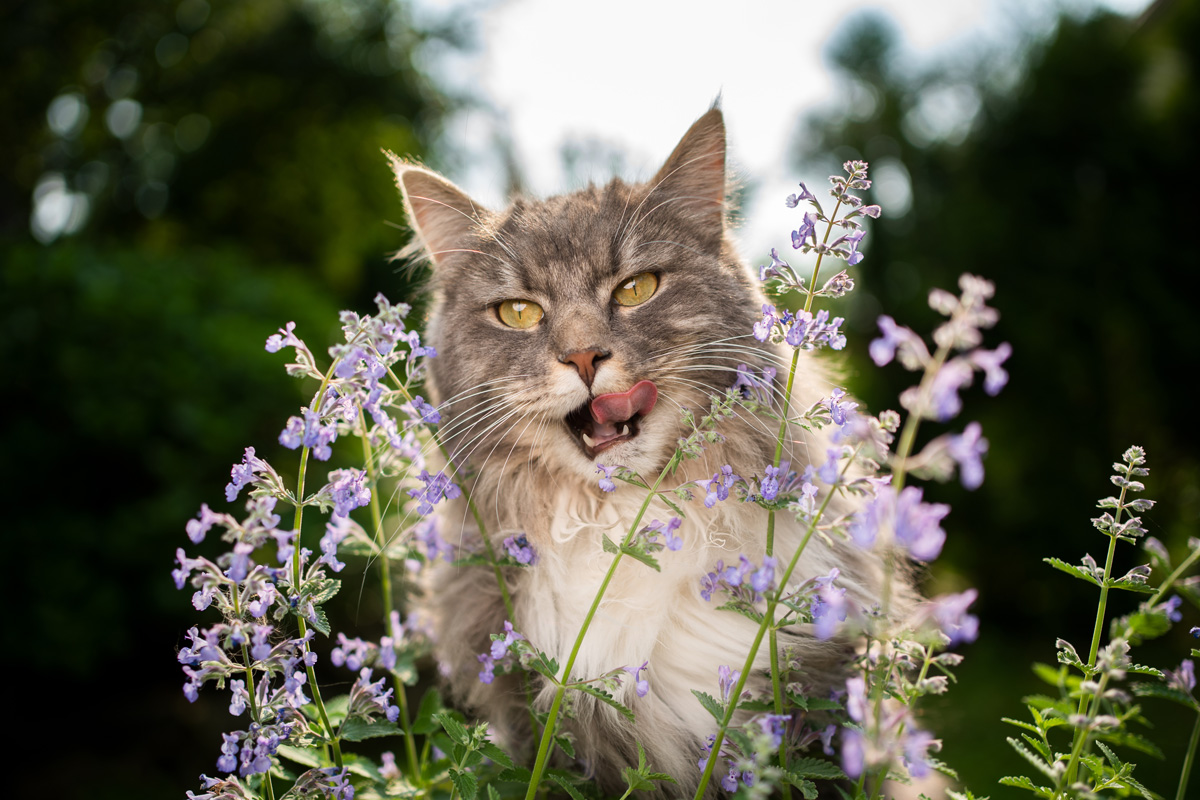
One of the key differences between the two species is the lower concentration of nepetalactone in catmint. This chemical is responsible for the euphoric high cats get when sniffing or ingesting the leaves of catnip.
Instead, catmint is considered the ornamental option among the nepeta seed family. It's great for filling up the edges along flowerbeds and is used as an alternative for those who find growing lavender too laborious.
Genetic Mutations
A member of a renowned gardening forum suggested the possibility of a purple catnip plant being a genetic mutation. Similar to the occurrences of purple fruits and vegetables we're familiar with today, such as purple cabbage, purple cauliflower, and purple broccoli.
The user also mentioned a few steps to help identify if your catnip truly is a genetic mutation. First, you begin by harvesting and planting the seeds from the purple catnip, followed by isolating and pollinating them after. The chances of obtaining purple catnip seeds will be higher by doing this.
When Should I Harvest Catnip?
The best time to harvest your catnip is when it's in bloom. Ideally, during the late morning as the leaves can wilt as the day gets hotter. Cut off the stems, then hang them upside-down to speed up the drying process.
The drying can take up to 2 to 3 weeks, depending on how dark and well-ventilated the space is. Once the catnip has dried, transfer them into a sealed bag and put them in a freezer. Doing this will preserve the longevity of your catnip's aromatic properties until needed.
Some of the best ways to utilize your fresh harvest are by sprinkling the leaves on cat toys, stuffing them into a sachet to steep into tea, or appreciating its fragrance by making it into potpourri.
Is Catnip Still Edible Even If It's Purple?
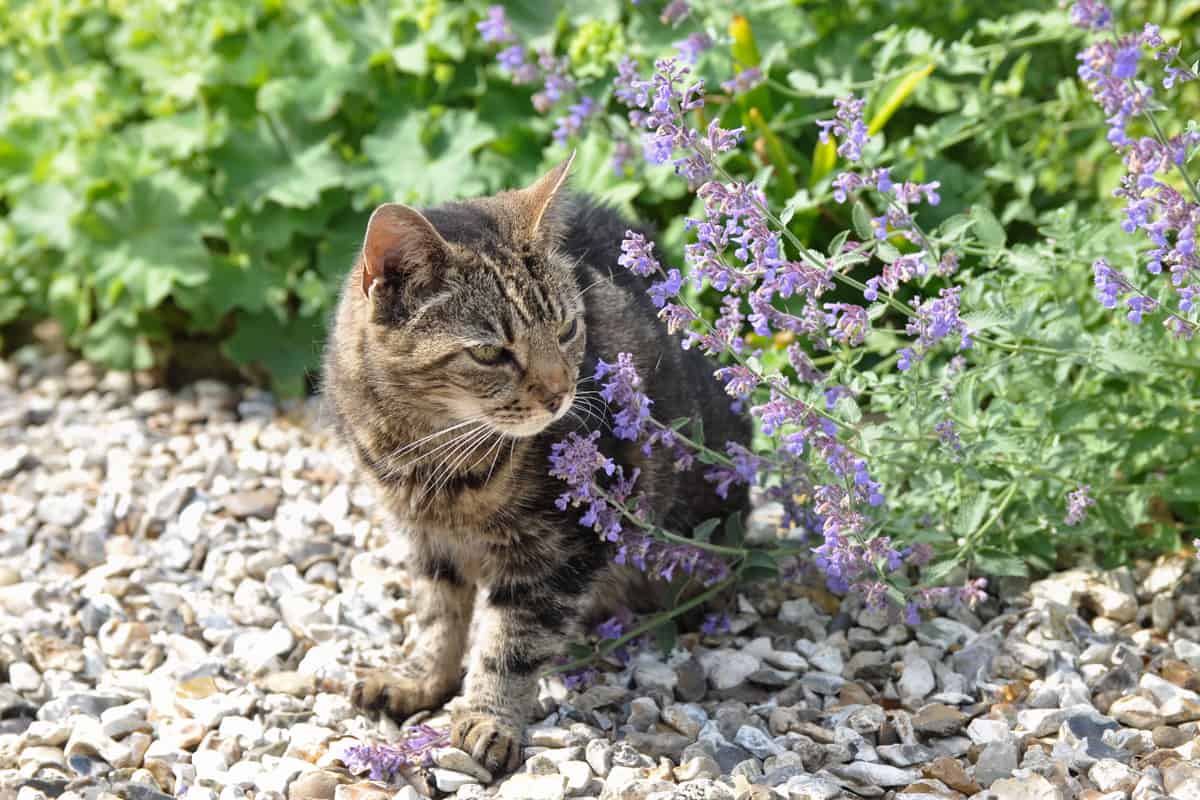
Regardless of whether you can identify your plant as catnip or catmint, we don't recommend consuming anything that could potentially cause discomfort to illness.
While catnip is known to be used as a sedative and consumed as a tea, studies have shown little regarding the health benefits it may bring. Some potential risks of ingesting catnip tea include allergic reactions, drowsiness, and vomiting.
Pregnant women should also avoid catnip tea. This is because the relaxing properties of the nepetalactone may cause uterine contractions resulting in premature labor.
Another cause for concern is the use of catnip tea to treat colicky babies. It was once a traditional remedy to help infants go to sleep. However, it's no longer a recommended practice as there are now better alternatives for treating colic.
Catnip and Cold Weather
While catnip is fairly easy to grow and maintain, that doesn't necessarily mean it won't need as much care through the winter months. It's best to note that it prefers warm and sunny weather conditions.
To ensure your catnip survives the cold when it goes dormant, remember to trim any new growth you see after the first frost. Around 3 to 4 inches should be enough as this will allow your catnip to focus growth on its stem.
Also, forgo watering it during the winter months, as wet soil can be fatal to your plant.
To learn more about keeping your catnip alive during winter, check out our post on How To Overwinter Nepeta.
Does Catnip Like Sun or Shade?
Catnip thrives in sunlight. We recommend that you plant your catnip in areas where it can get at least 5 hours of direct sunlight daily.
Keep in mind that if you want your catnip to bloom, ensure it isn't consistently exposed to direct sun for more than the suggested time. This can cause it to grow excessively and take on a weedy appearance.
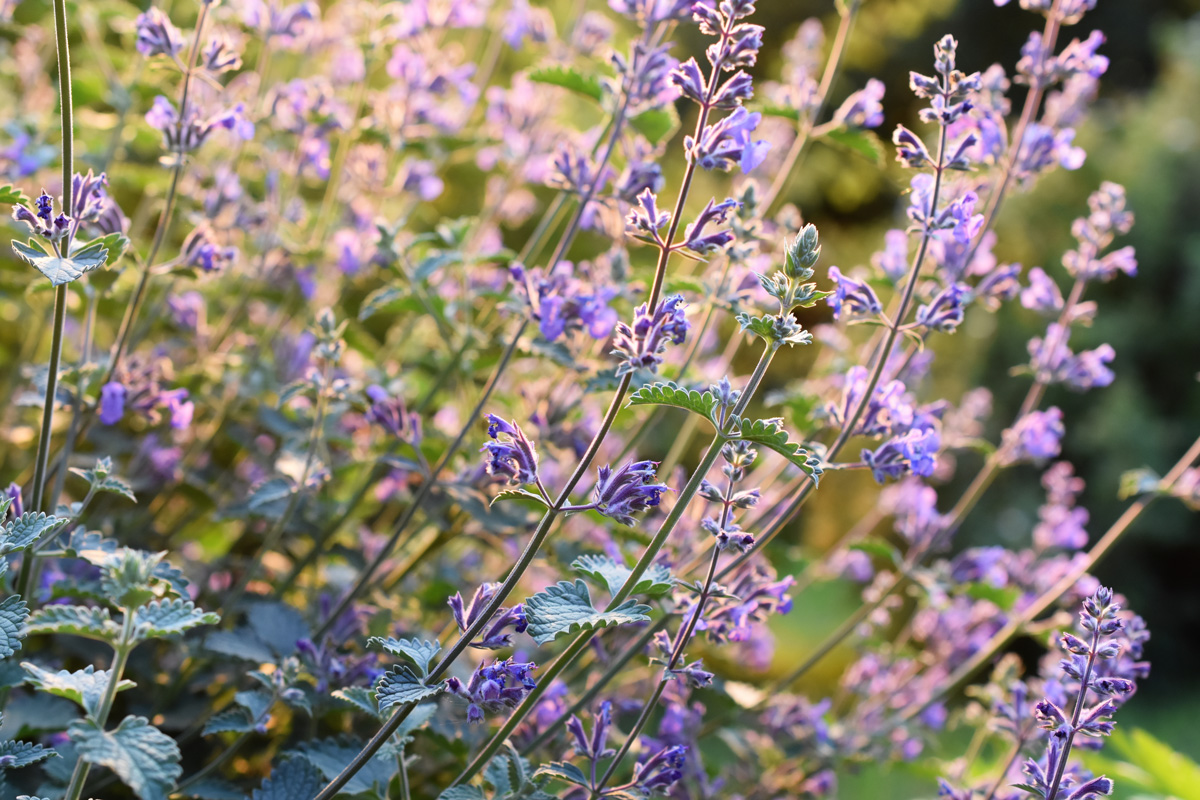
How Long Do Catnip Plants Live?
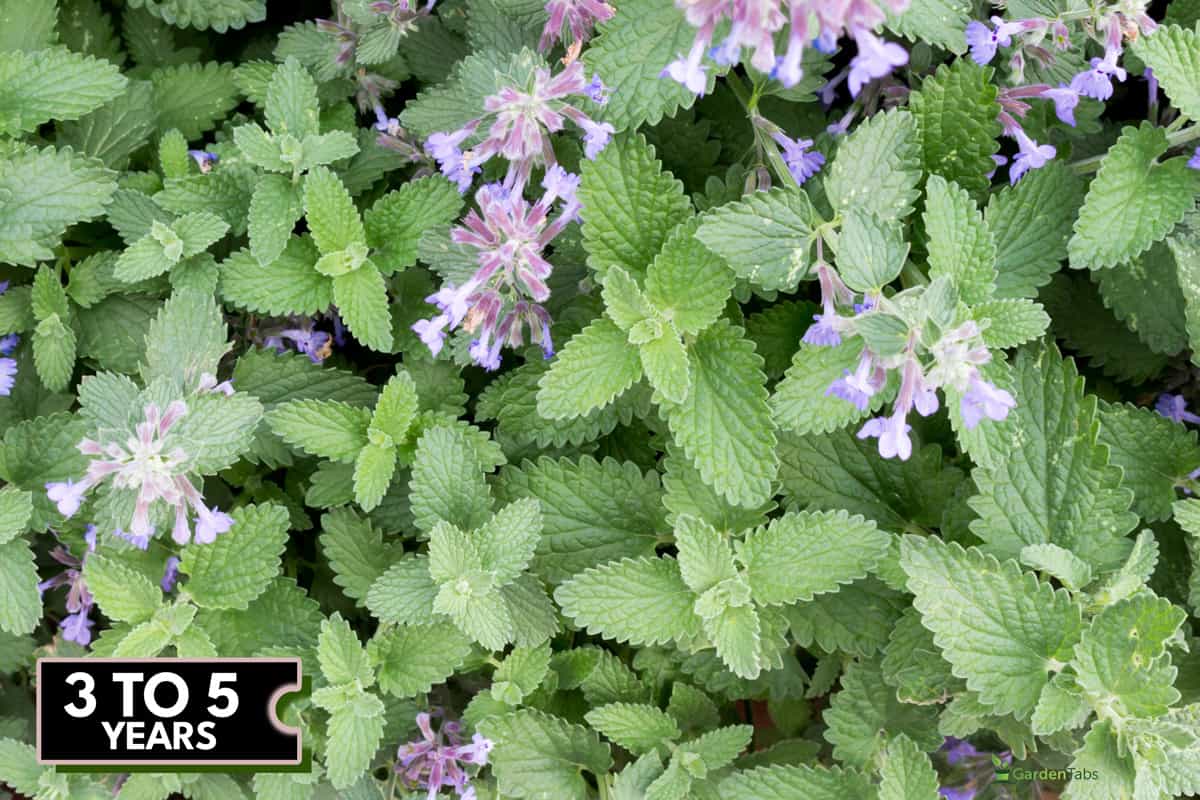
Catnip is perennial in nature, meaning it will survive over many years after planting. On average, they can live up to 3 to 5 years by going dormant every winter and growing back in the spring. However, the lifespan of your catnip can depend on where you plant it, say your yard or in a gardening pot.
What Are The Ideal Conditions For Catnip To Grow In?
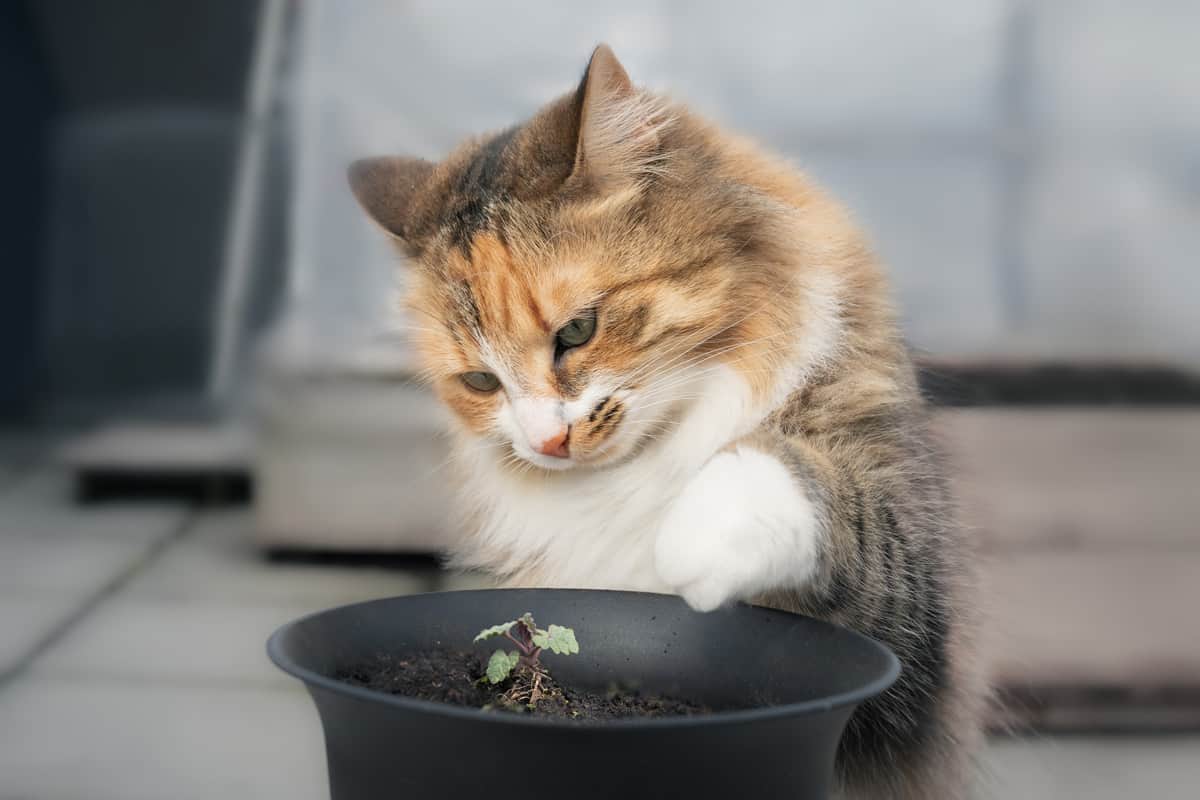
The life cycle of a catnip plant may be a long one, but it will only live up to its full potential if you're attentive to its needs. Here are a few things to consider when planting catnip:
Soil And Location
Where you plant your catnip can dictate its lifespan. Be ready with a nice patch of loamy soil with plenty of sunlight throughout the day. But if you live in areas below the 3 through 9 hardiness zone mark, opt for indoor planting if you wish to have more control over temperature.
Pruning
Pruning your catnip can help prevent pests such as spider mites, whiteflies, thrips, and flea beetles. Practicing proper pruning can also promote growth after its first flowering season.
Should I Cut Back A Catnip Plant?
Generally, it's best to cut back your catnip once it flowers. Along with the presented benefits of prolonging its life cycle through focused root growth in the winter, cutting your catnip prevents the plant from looking scraggly and encourages its next flowering season.
Fenced Area
You may be planting catnip specifically for your cats, but you might want to keep the area safe from unexpected visitors. Add some garden fencing or a few stakes around your plant to help prevent any unnecessary frolicking or tumbling around your catnip.
Click here to see this garden fence on Amazon.
In Closing
From the state of the soil you're using to the control over the environmental conditions of your planting site, there are several reasons to look into when trying to understand why your catnip plant is turning purple.
With this, we'd like to add that whether you're filling your home with catnip for your furry friends or simply enjoying its aromatic scent, it's always a comfort knowing you have such a well-loved plant in your garden.
Just remember to give the proper care it requires, and you're set with a plant that will last you for years.
If you liked this article, check out these related posts:


